Mobile Marketing Winners of Super Bowl XLVII

Every year when the Super Bowl comes around in early February, you are watching for one of two reasons. One, you’re a football fan and you’re looking forward to the biggest game of the year, or two, you are watching for the commercials. The $4 million commericials to be more specific. With such an expensive price tag on a 30 second time slot, it’s no surprise that the pressure was on for companies and brands to deliver. Of course, that’s the case with every Super Bowl these days, but this year it was a little different. It’s 2013, so mobile marketing and social media were expected to be integrated into the commercials and bring added interactivity to their campaigns. Fortunately, some companies were able to do this, while others, unfortunately, were not.
It’s already known that mobile is continuing to grow as a mutitasking device. However, incorporating that into effective TV commercials is not always that easy. Mobile call-to-actions (CTAs) do not work for everyone. The effectiveness usually depeneds on the brand’s campaign message and target demographic. Still, marketers who choose to ignore what TV and the second screen have to offer are missing out on the HUGE opportunities they can provide. One 30 second ad could turn into a long-term, one-on-one relationship with your consumers.
According to Lora Schaeffer, Executive Director of Social at Resource in Columbus, Ohio, “The second screen winner really appeared to be Twitter as phones across America lit up the Twittersphere during the Beyonce halftime show and again during the blackout.”
So with that in mind, let us take a look at the mobile marketing winners of Super Bowl XLVII.
Paramount Pictures

Paramount Pictures released an app earlier in the year specifically designed for their upcoming movie “Star Trek: Into Darkness” to help them build hype for its release on May 17th. The app was designed so that viewers could sync the app with the commerical while it was airing on TV. The app, using audio recognition, was able to recognize that the user was watching the ad on TV and unlocked a video teaser for the movie. On top of this, users of the app were also able to get exclusive tickets to the movie before its release. Before the game, the app sent out a push notification to anyone who had downloaded the app reminding them to interact with the app during the game. After the commercial aired, users were directed to the movie’s website to unlock the content.
Bottom Line: The campaign was able to combine mobile and televison while also getting consumers to use the app multiple times leading up to the May premiere. That’s a definitive win.
Oreo
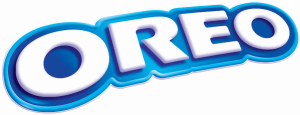
Oreo focused on mobile photo sharing and social media in their ad campaign. They also had one of the funnier commericals of 2013, featuring several people whispering it out with each other in a library over which was better, the creme or the cookie. The end of the spot prompted viewers to pick their favorite of the two on Instagram. Almost immediately after the spot aired, Oreo had over 37 THOUSAND new followers. Before the ad? Oreo had 2200 followers.
Bottom Line: Oreo emphasized social media beautifully by creating a funny Super Bowl ad that made their Instagram explode literally overnight, and had consumers feverishly taking and sharing photos with them on their smartphones and tablets. They also created a memorable tagline in the commercial with “Something we can all disagree on.”
The NFL
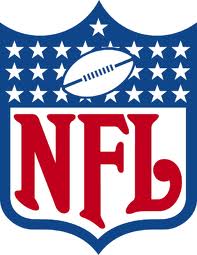
The National Football League was able to efficiently use CTAs during the course of the Super Bowl to build up its SMS database. They prompted viewers with text keywords like MVP and REWIND to their short code 55171. An example was when viewers texted in MVP, they were sent back a text message with a link to a mobile site which allowed users to cast their vote for the game MVP as well as receive future messages.
Bottom Line: The NFL was able to build up their SMS database while also allowing fans to interact with the MVP vote as well as establish a connection with the league over a the long-term. This will only help the league maintain a good relationship with its fans now, as well as into the future.
Lincoln
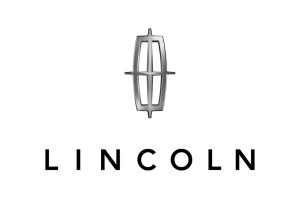
Automaker Lincoln ran an ad which featured its partnership with comedian Jimmy Fallon. They teamed up with Fallon as a part of a larger company-wide rebranding effort on a crowdsourced spot that advertised their MKZ sedans. Viewers were able to tweet Fallon using the hashtag #SteerTheScript to help tell the story of Lincoln’s rebranding. The top five tweets were then aggregated into a 90 second commercial. A CTA at the end of their 30 second ad compelled viewers to visit their website steerthescript.com which is also optimized for mobile, which means viewers could easily see and use the site on their mobile devices.
Bottom Line: Lincoln was able to put together a mobile marketing campaign that tied directly into their commercials using social media giant Twitter. They also used the help of mini-celebrity Jimmy Fallon to encourage viewers and users to interact with them through Twitter and had people talking about the MKZ during the game, most of them conversing through smartphones and tablets. A great way to tie social media, mobile marketing, and their Super Bowl commercials together while also promoting the MKZ. A terrific effort.
Samsung
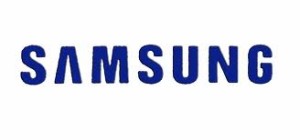
Samsung has historically been very aggressive with its TV advertising. This year for the big game, they decided to bring in comedians Seth Rogen and Paul Rudd for a spot that centered around them competing to be “the next big thing.” The commerical took a comedic turn when, after pitching several ideas to Samsung’s “executive”, basketball star LeBron James ends up stealing the spotlight from Rogen and Rudd and wins the title of “the next big thing.” Samsung wrapped up the commercial beautifully by encouraging viewers to join in on the conversation on Twitter using the hashtag #TheNextBigThing.
Bottom Line: Samsung incorporated Twitter into its commercial allowing viewers to interact with them while also running banner ads on ESPN’s and CBS’s mobile sites and The Weather Channel’s iPhone app during the game, and in turn drove YouTube viewership up. Can’t get much better than that.
Axe
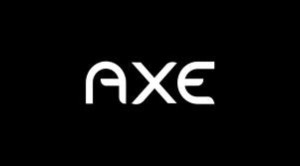
Axe was able to connect their TV promotion with their time sensitive web sweepstakes which allowed them to promote their new product. Their sneakily funny commercial featured a lifeguard rescuing a woman from the ocean, but when she is revived, she ends up running towards an astronaut who is also on the beach, which in turn promoted Axe’s new Apollo line of personal care items. The end of the commercial urged viewers to go to their website axeapollo.com before midnight for a chance to win a trip into space.
Bottom Line: Axe was able to optimize all of their content for mobile devices, so they could ask viewers to fill out a registration form to enter the sweepstakes without it being a hassle for people who wanted to enter. The microsite was also able to compel viewers to sign up for email offers which allowed Axe to build their database as a part of their campaign to connect traditional TV marketing with their new digital apparatus. They also made it possible to share content about the commerical and brand through social networks like Facebook and Google+.
These were just some of the commercials which took advantage of mobile marketing through their Super Bowl ads. As you can see, mobile marketing has become essential to making any marketing campaign effective, and companies large and small are starting to take note. This was obvious while viewing the Super Bowl ads. Now, you are probably not a large enough company to be able to afford a $4 million spot in the Super Bowl, but there are several ways to implement mobile marketing into your marketing campaign, and that can start with us here at Anchor! We have extensive knowledge in mobile marketing and have done it long enough to know what works and what doesn’t. The best part is that you don’t need to drop $4 million or more to launch a mobile marketing campaign. We have helped companies launch and run mobile marketing campaignssuccessfully without putting a hurt on their wallets. Mobile marketing WORKS and it is CHEAP! Get started on your mobile marketing campaign today and reap the rewards the giant companies are already taking advantage of!









Leave a Reply
Want to join the discussion?Feel free to contribute!